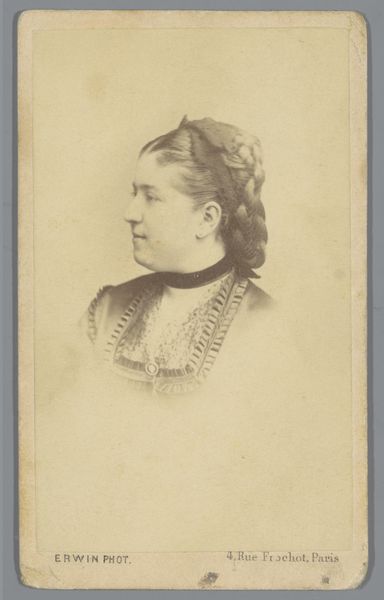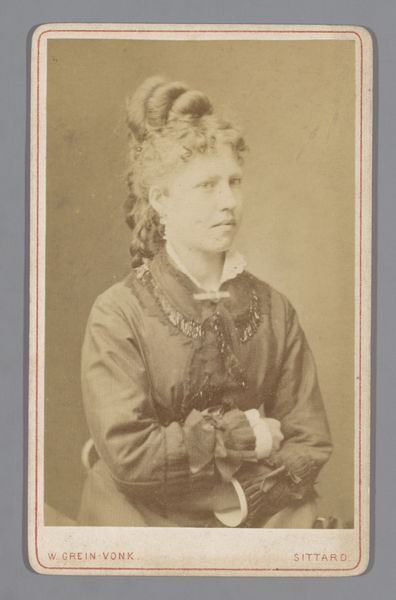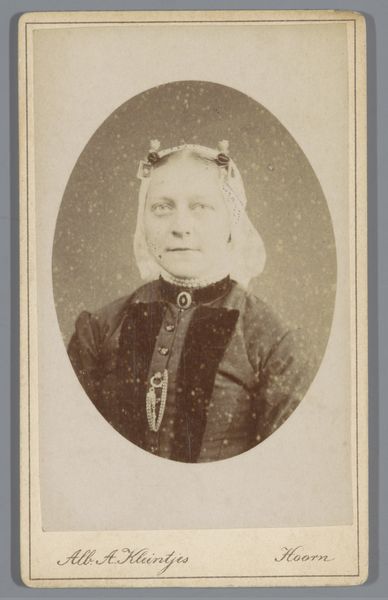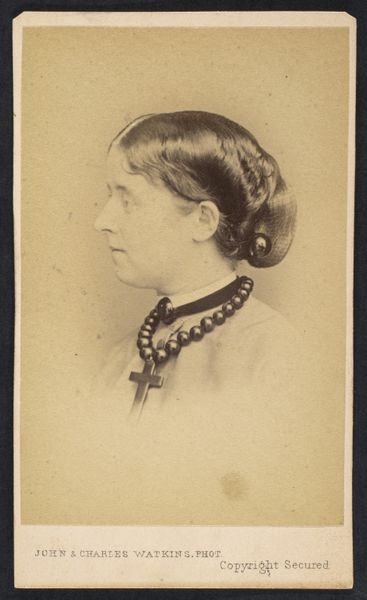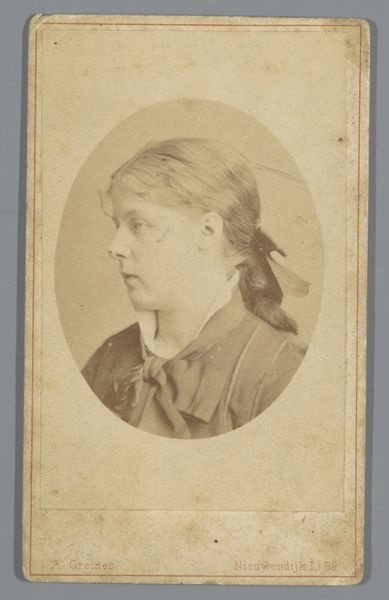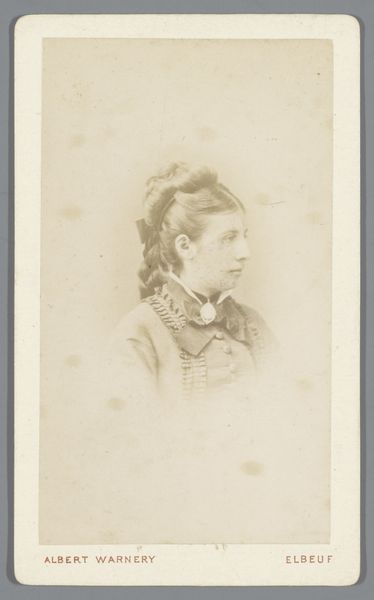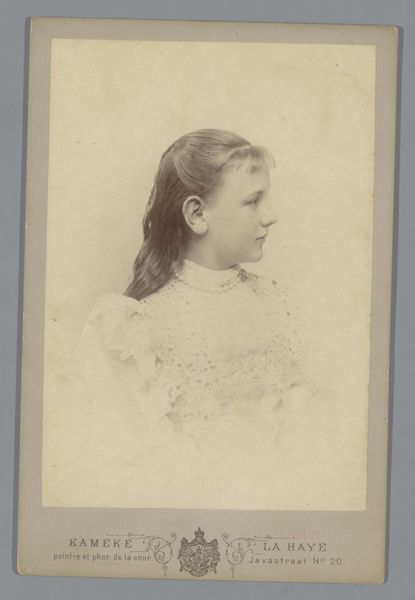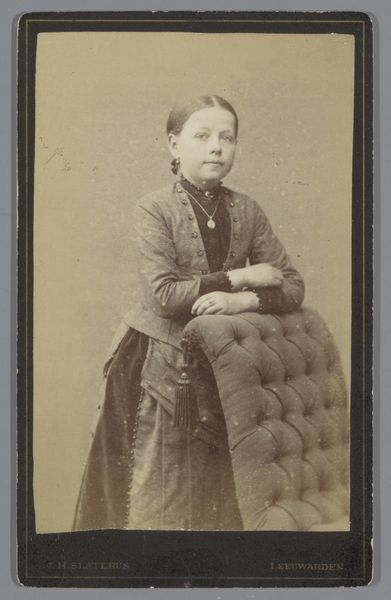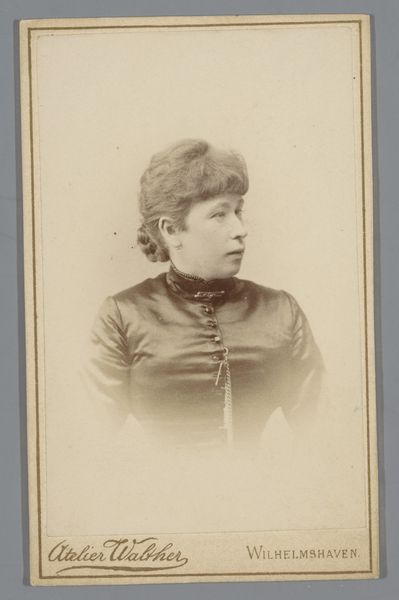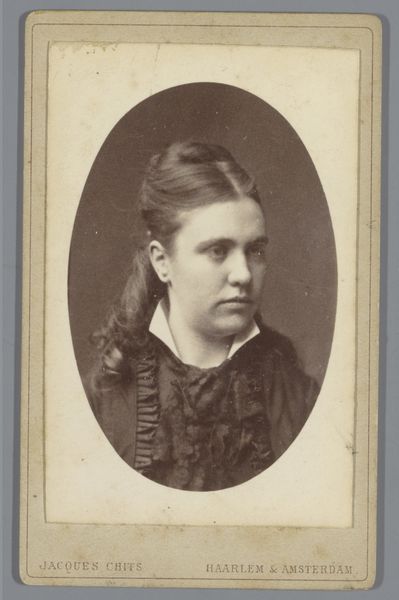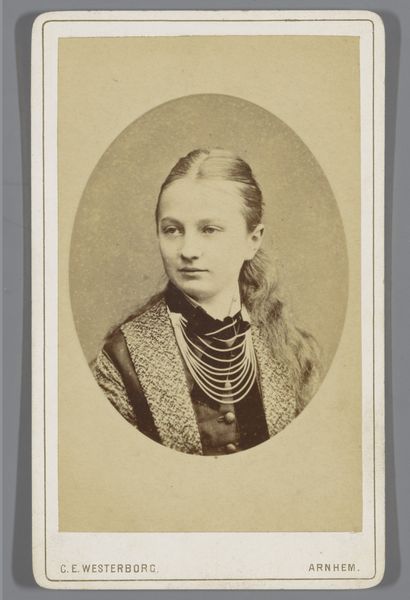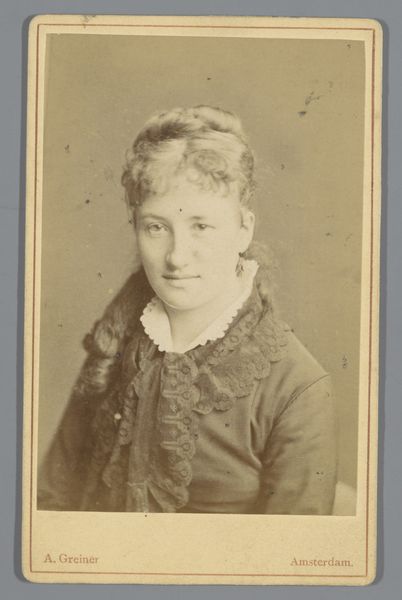
photography
#
portrait
#
photography
#
19th century
Dimensions: height 104 mm, width 64 mm
Copyright: Rijks Museum: Open Domain
Editor: Here we have "Portret van een onbekende jonge vrouw," a photographic portrait from between 1880 and 1890 by Bernardus Bruining, housed in the Rijksmuseum. It’s striking how this sepia tone renders her both familiar and distant. What can you tell me about it? Curator: Consider the labor involved, even in a relatively simple portrait like this. The photographer, Bruining, had to master the wet collodion process or similar technology of the era. Each photograph wasn't merely snapped, but rather meticulously crafted, from the preparation of the glass plate to the final print. Editor: So, you’re less interested in *who* she is, and more about *how* this portrait came to be? Curator: Exactly! Think of the social context, too. Photography, while becoming more accessible, was still a significant investment for the sitter, this young woman. This image hints at a certain level of material comfort and social standing. Look closely at her dress, her hairstyle - all consciously chosen to present a certain image, and carefully fabricated by seamstresses, hair stylists, etc. We can explore the hidden labor and material consumption behind these presentations of the self. Editor: That's fascinating. I usually focus on the subject's expression, trying to guess at their personality. Curator: The sitter's “personality” is also constructed. Notice the subtle hand-tinting potentially used to bring warmth to her skin, blurring the boundaries between the photographic truth and manufactured representation. Do we really know who she is, or are we seeing a product, a carefully crafted commodity designed for specific social functions? Editor: I see your point. It reframes the whole photograph. It makes me think about the resources required to capture even what appears to be a simple image. Curator: And the implications of that access for this particular young woman. Thinking about the materials and processes helps us understand so much more about the cultural and economic environment surrounding its creation and consumption.
Comments
No comments
Be the first to comment and join the conversation on the ultimate creative platform.

